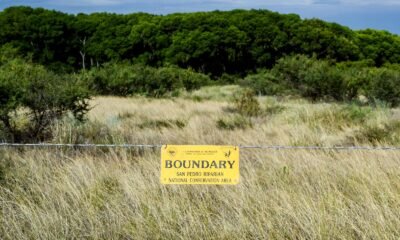Business
Rural Arizona Faces Dire Staffing and Funding Shortfalls as Wildfire Season Approaches

Rural fire districts in Arizona are urging state lawmakers to enhance funding in light of critical staffing shortages. The appeal comes as officials warn of the increasing risks of wildfires similar to those experienced in California earlier this year.
Dan Freidberg, president of the Professional Fire Fighters of Arizona, highlighted the urgency during a legislative committee meeting on fire preparedness. He emphasized that Arizona is not equipped to face the wildfire threats it currently faces.
“The threat of wildfires is here,” Freidberg stated. “We are not prepared for it.” His comments echoed concerns shared by committee chairman Rep. David Marshall, who noted that the committee aims to prevent wildfires that have devastated neighboring states.
Freidberg traced the funding challenges back to Proposition 117, passed in 2012, which instituted a 5% cap on property tax assessment increases. He argued that this measure has drastically limited revenue for fire districts, now functioning with outdated budgets.
According to the National Fire Protection Association, adequate fire stations should operate with at least four personnel. Freidberg revealed that 92% of Arizona fire districts currently operate with only two firefighters, jeopardizing public safety.
“We’re being asked to fight Mike Tyson in his prime with one hand tied behind our back,” Freidberg quipped, underscoring the dire situation.
Discussions around lifting Proposition 117 emerged, although some members, like Pine-Strawberry fire chief Gary Morris, prefer a formula adjustment to boost funding. He noted that rural communities appear willing to invest in enhanced fire protections.
In 2022, voters had a chance to support fire districts through Proposition 310, which proposed a 0.1% sales tax to fund the state’s 144 fire districts. However, the measure was narrowly defeated, with 51% opposing it.
Will Humble, director of the Arizona Public Health Association, pointed out that rural voters rejected the proposed assistance, despite metropolitan voters showing support. “Rural people had a golden chance at a handout from urban and suburban people to help them with their fire districts, and the rural people said we don’t want it,” he remarked.
Committee discussions revealed that relying solely on property tax solutions may not address funding issues effectively. Russell Smolden, CEO of B3 Strategies, suggested exploring alternative funding avenues, given the sparse population in many rural districts.
Although state lawmakers could allocate additional funding to fire districts in the state budget, Rep. Marshall cautioned that budget constraints might hinder substantial appropriations. “We’re not here to have hearings and walk away and not do anything,” he affirmed, reiterating his commitment to advocating for firefighters.
The ramifications of the staffing crisis extend beyond firefighting, impacting emergency medical services in rural areas. Freidberg noted that understaffed fire districts impede first responders’ ability to handle emergencies effectively.
Humble emphasized the public health implications of this situation, warning that the lack of available EMS resources in rural locations poses significant risks to community safety.

















